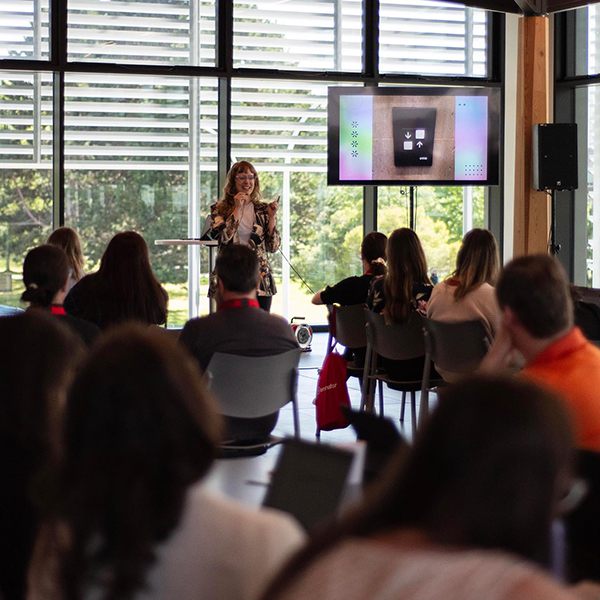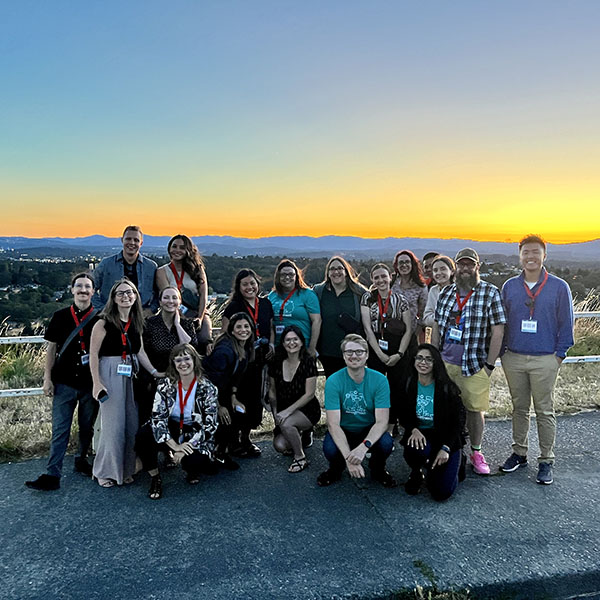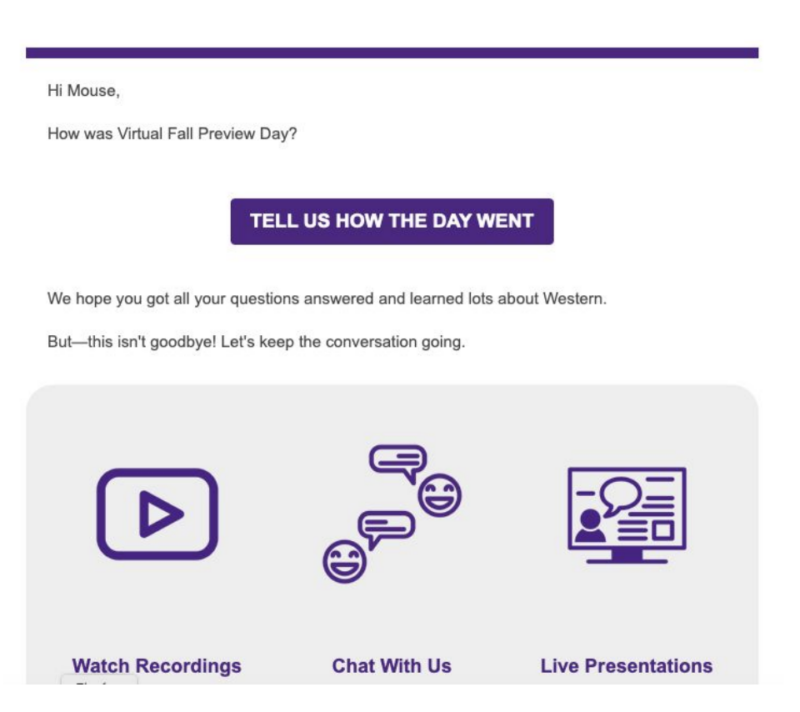Published on September 7, 2023
By Kate Bundy
#PSEWeb is Canada’s largest post secondary education Web and communication professionals conference. This year, the two-day event took place on July 15 – 17 at the University Victoria on beautiful Vancouver Island.
As both a selected speaker and an attendee, I had the opportunity to get all the latest buzz on what’s happening in higher education digital marketing and communications. From content to analytics to artificial intelligence, there is something to learn for all kinds of roles at #PSEWeb!


Here are my top takeaways from the sessions I attended at #PSEWeb:
1. Smart content is better than lots of content
Five years ago, everyone was shouting, “Content is king!” and trying to pump out as much content as possible from blogs to posts to email communications. Is fire-hosing the internet with content still the right approach though?
Several sessions at #PSEWeb talked about how to create content for certain audiences at specific times after leveraging insights from analytics, user feedback and audience personas.
Next time you want to publish content, ask yourselves the following questions:
- Who is this for and do they need to see this now?
- Is this content immediately actionable?
- How does this serve the overall strategy of my team?
If you can’t come up with clear answers for these three questions, go back to the drawing board and check in again with your goals to make each piece of content count for your users.
2. Short video is in high demand
Cadie de Kelver’s session, “A fresh take on short video from a recent grad” gave the following tips for social media and comms strategy teams:
- Strive to make student-centred videos featuring students or even created by students themselves. Audiences can feel when it’s authentic and appreciate aspirational yet relatable content.
- Plan and publish videos at the most opportune time in their student journey from recruitment to orientation to exams and graduation
- Embrace the constraints and opportunities of each platform like trending hashtags, concepts and sounds
Especially when it comes to recruitment and campus life, the results are in: Students want to see other students doing student things on social media platforms. Let’s give the people what they want and create successful campaigns while we’re at it!
3. Emails still dominate digital marketing
Despite how we might feel about those emails overflowing our inbox, email marketing still takes the cake for return on investment (ROI) for audience engagement and conversions.
Next time you’re crafting an email to send to a bunch of people, follow Dayana Kibild’s advice from her session called “Write emails people will read.”
- Make sure your emails are well-timed, scannable and actionable. She even said, “If there’s no call-to-action, don’t send it.”
- Create specific subject lines at around 6 words with dates, events and verbs to tell readers that there’s something for them to act on now.
- Put linked buttons in your emails for your most important call-to-action. Studies show that using a button increases clicks by 28%!

4. Google Analytics 4 is here
Simon Labonne gave a “GA4 Crash Course” at PSEWEB that was widely attended, and he gave us an inside look at the key differences between Google Analytics 4 (GA4) and Universal Analytics (UA):
- Since third-party cookies are going away, Google Analytics 4 (GA4) is using event-based analytics that emphasize data privacy instead of user session-based analytics.
- GA4 has cross-platform reporting so you don’t have to switch between looking at your properties between your website and your app.
- GA4 clicks in with data visualization and analysis platforms like BigQuery to get even more granular with your data insights.
Is there a downside to GA4?
Simon explained that the dashboards in GA4 are less appealing than UA, but the analytics can be more powerful depending on how you set up and maintain your settings.
What’s the takeaway about GA4?
Start adopting GA4 now to make sure you’re prepared for a future without third-party cookies.